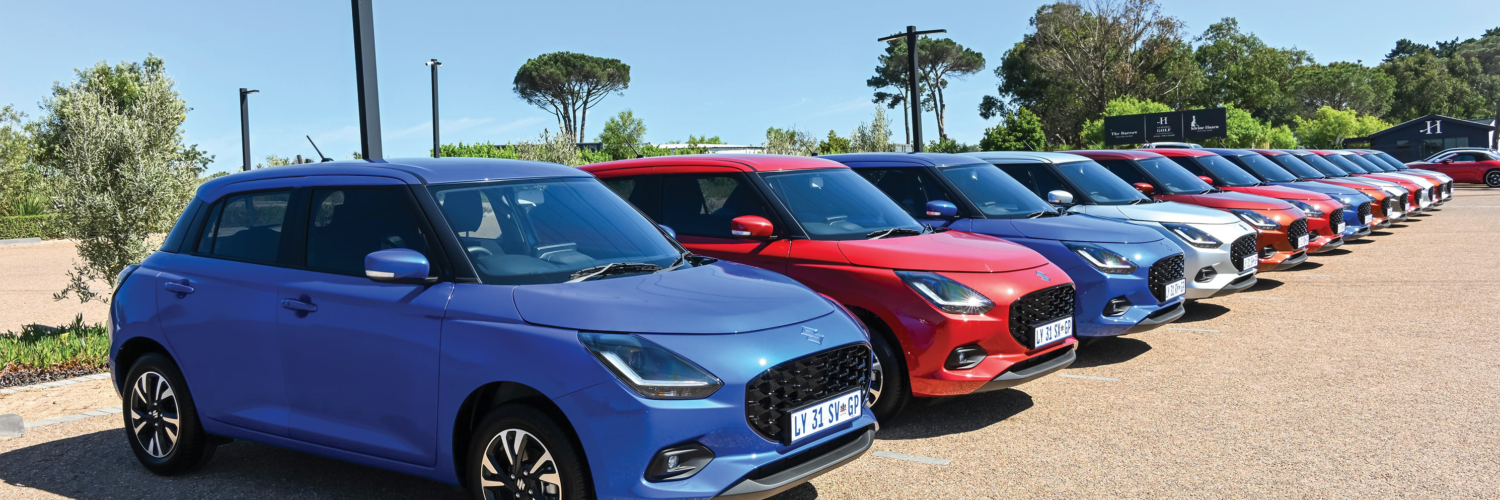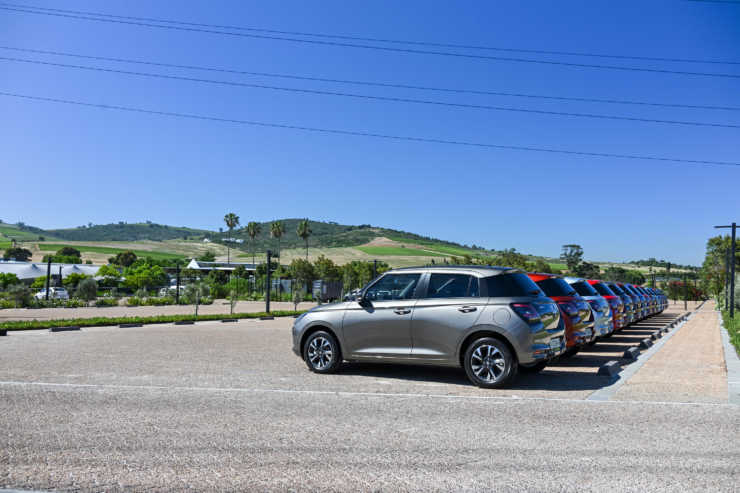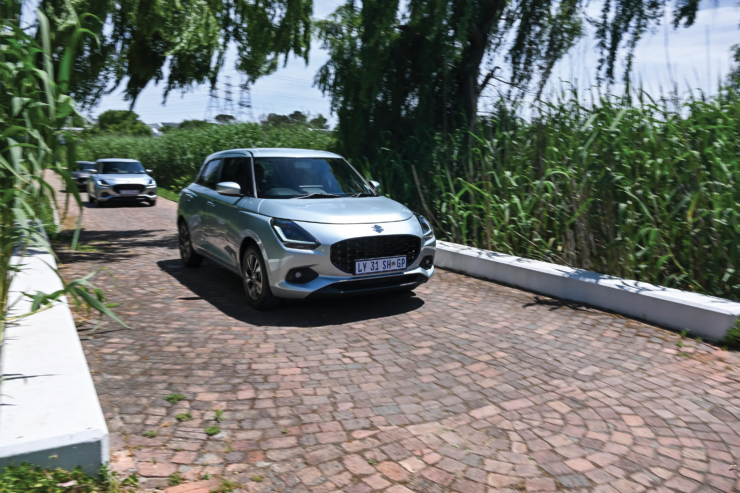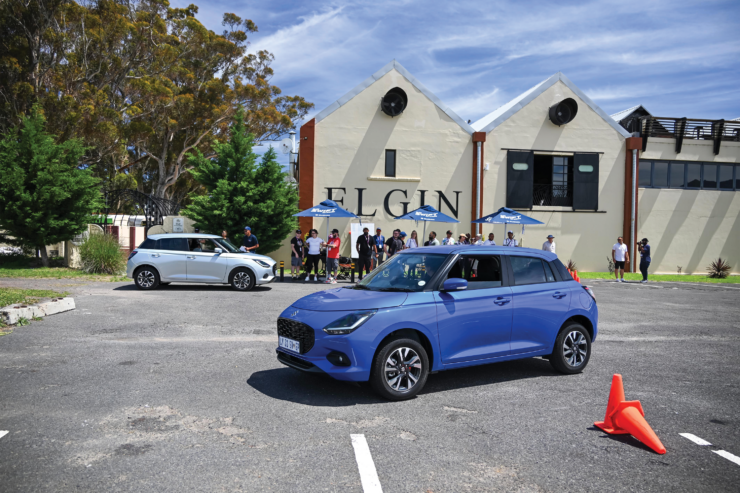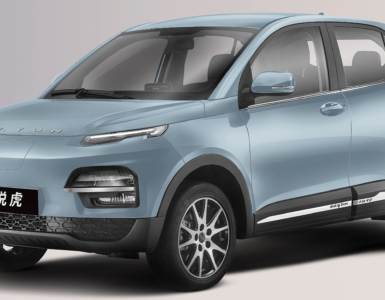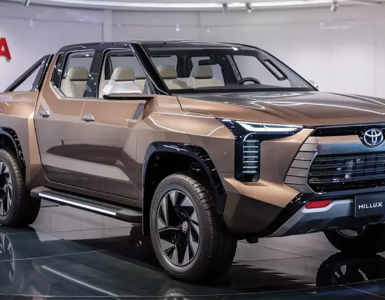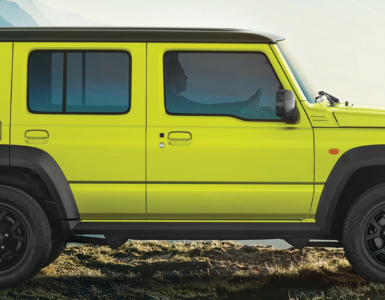FEEL ICONIC: The new Suzuki Swift builds on the reputation of its previous model with better fuel economy and latest modern gadgets
By Ali Mphaki
Conventional wisdom has it that there are only five perfect days in a year in Cape Town. The weather can be as temperamental and unpredictable as notorious trigger-happy gangs marauding the city – shooting out a toxic mix of strong winds, rain, snow, and sunshine, all in one 24-hour cycle.
Wednesday, November 6, was one such perfect day when we landed at the Cape Town International airport for the launch of the new Suzuki Swift range.
It was like the gods, man, and machine had conspired in GNU fashion to provide the perfect backdrop in welcoming the sprightly Japanese Samurai Warrior inspired new Suzuki Swift to the land of the Khoisan.
The two-hour flight from Johannesburg was turbulence free though the landing was not that smooth, the heavy thud of the aircraft tyres jolting me from my reverie as they hit the tarmac.
Hopping into a courtesy bus we made our way out of the spaghetti-like airport roads heading east towards the Hazeldene wine estate, kilometres of shack dwellings of all descriptions and shape dotting our landscape as we made our way to the world-class destination offering culture, cuisine, golf and entertainment stretched across the Bottelary Hills in the Stellenbosch winelands, just 30 minutes from Cape Town.
This is where we first got to meet the new Suzuki Swift, it’s clear, youthful and energetic exterior styling immediately drawing us into its all-round appeal.
Obvious to the naked eye is the cautious approach adopted by Suzuki designers to do anything radically different, opting instead to evolve the popular and instantly recognisable shape of prior Swift models to hit home with a new audience.
This fourth-generation model builds on the strengths of its predecessors with fresh exterior styling, a revamped interior, advanced digitisation and upgraded safety features.
Offered in a choice of three distinct model grades, the GL, GL +, and the GLX, key revisions comprise restyled headlight clusters with L-shaped signature lamps; an oval radiator grille with a piano black finish and a new bumper with a more pronounced lower intake.
A sculptured tailgated with an integrated spoiler and high level brake provide finishing touches to the wide-stanced 4th generation Swift.
Time to sample the new Swift and inside the cabin the ambience comprise a new wrap-around dashboard design with horizontal air vents and centre controls angled towards the driver for improved ergonomics.
We got to sample all the three model grades in our inaugural 200km ride, the flagship Swift GLX being our model of choice since it can be paired to both available transmissions and offers a substantial amount of extra features over its GL and GL+ stablemates.
As our Swift GLX gobbled the kilometres of the undulating, twisting and curving roads leading to Franschhoek, it did so with the kind of the feel-good driving pleasure you would expect from something with a Swift badge tacked to its rump.
The multifunction steering wheel feels engaged with the sporty and stylish metre instrument cluster combining analogue dials with either a colour or segment LCD display that lets you access a wide range of information at a glance, including average and instantaneous fuel consumption, driving range and – on flagship GLX models – power and torque
Impressive was that this all-new model proves even more frugal to run than ever before now that it is paired to the new three-cylinder petrol powertrain.
The 1.2-litre three-cylinder petrol engine making 60kW at 5,700rpm and 112Nm or torque at 4,300rpm., offered strong performance right through the rev range courtesy multipoint fuel injection and four valves per cylinder.
Suzuki says it returns a combined fuel consumption figure as low as 4.4l/100km or 22.72km/l – an 11% improvement over its predecessor- though our unit recorded 6.1/100km, particularly when we hit those high inclines.
Unlike some of its rivals, the new Suzuki Swift offers a comfortable ride comfort thanks to its body-hugging redesigned front seats, an added bonus the presence of four water bottle holders (one in each door).
No doubt the scenic route we took is a driver’s delight, and having to negotiate the precarious hairpin bend along our way to Villiersdorp, known among select motoring journos as the late Steve Dlamini bend, it was comforting to know Suzuki doesn’t skimp when it comes to safety.
Every Swift comes standard with six airbags (front, side and curtain); ABS brakes with EBD, Brake Assist Function, Electronic Stability Programme and rear ISOFIX anchors. In addition, all occupants now have access to three point seatbelts (two front, three rear) with audible/visual reminders.
All this and more offered from R219,900 for the Suzuki Swift 1.2 GL manual and R284,900 for the top-of-the-range Suzuki Swift GLX CVT.
Pricing includes a two-year/30,000km service plan and five-year/200,000km promotion
Motoring: Briefs
KIA CARENS FOR SA
The Kia Carens is scheduled to launch in South Africa in 2025, with this crossover-styled 3-row MPV likely to arrive in facelifted form. The South Korean automaker’s local division has confirmed to Cars.co.za that the Indian-built Carens is scheduled to launch in Mzansi at some point in the 2nd half of 2025.
That timing lines up neatly with a recent Autocar India report that suggests production of the facelifted Carens will commence in May 2025.
Based on that, it seems highly likely our market will receive the as-yet-unrevealed refreshed version of this crossover-styled 3-row MPV rather than the pre-facelift model pictured here. So, expect updated exterior styling, tweaks to the cabin design and perhaps a few fresh features, too.
Back in August 2023, Kia SA quietly registered 2 units of the 4th-generation Carens, soon thereafter confirming to Cars.co.za these were brought in “for homologation, study and consideration”.
BMW 3 SERIES ELECTRIFIED
The radical new electric BMW 3 Series has hit the road for the first time, as the company gears up to take on the Tesla Model 3 and next Mercedes-Benz CLA in 2026. Expected to revive the dormant i3 moniker, the electric 3 Series will be the second model to use BMW’s new Neue Klasse modular EV platform, following the launch of the closely related iX3 SUV in 2025.
It was previewed last year by the boldly styled Neue Klasse concept, which introduced a striking new design language that departs dramatically from the look of BMW’s current line-up while subtly nodding to some of its most important past models.
While the prototype has clearly been toned down slightly for production, it does retain the distinctive new kidney grilles, which wrap around the front of the car and house all the radars and cameras needed to facilitate next-generation advanced driver assistance systems (ADAS).
MERC DRIVES ALPINE
The Renault-owned Alpine team will use Mercedes engines in Formula 1 from the 2026 season. The deal, which follows the decision in September to end Renault’s own engine programme in 2025, runs until at least the end of 2030.
Alpine will also use Mercedes-supplied gearboxes from 2026, although the team are exploring their options to design these in-house from 2027.
The move, which is aimed at increasing competitiveness after years of the Renault engine failing to match up to its rivals, follows a shift in focus at Alpine, after many years of failing to achieve its ambitions in F1.
When Renault re-entered F1 as a team owner in 2016, it set itself a five-year target to be competing for world titles.
BRABUS ‘1000 ALL GREY’
There are clearly some incredibly literal people working in the Brabus marketing department right now, because after the firm took a Mercedes-AMG S 63 E Performance, gave it a load more power and then made every possible surface grey, the monochromatic creation has been called the Brabus ‘1000 All Grey’.
Zero points for creativity on that front then. However, the German tuning house hasn’t just fiddled with various computer settings to produce more power.
In place of Merc’s original 4.0-litre V8, the Brabus features a new 4.5-litre twin-turbo V8 that’s been tailored to work with the S 63’s plug-in hybrid system.
The result is a combined output of 986bhp and 1,620Nm of torque, which allows the over two-and-a-half-tonne limousine to do 0-100Km/h in 3.1 seconds.
It’ll go on to hit 200km/h after 9.7 seconds and reach an electronically limited top speed of 180mph.
The 1000 All Grey also features a stainless steel exhaust system, 4Matic+ all-wheel drive and can cover around 20 miles on pure-electric power, although that third feature probably doesn’t matter too much to potential buyers of this particular model.

